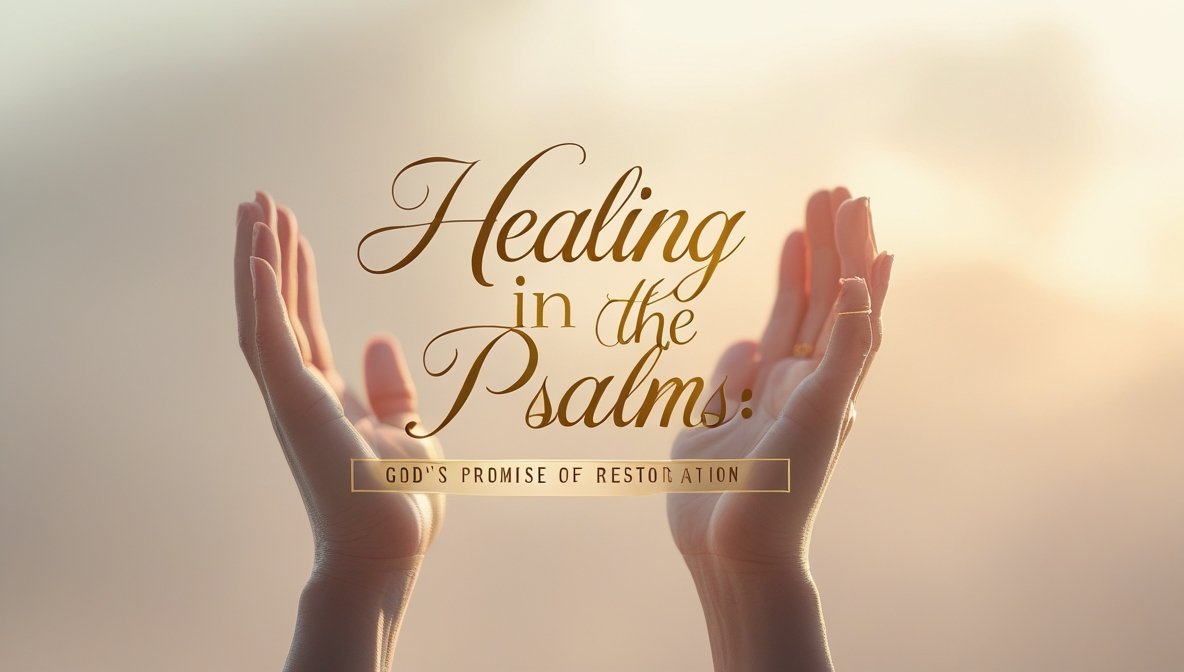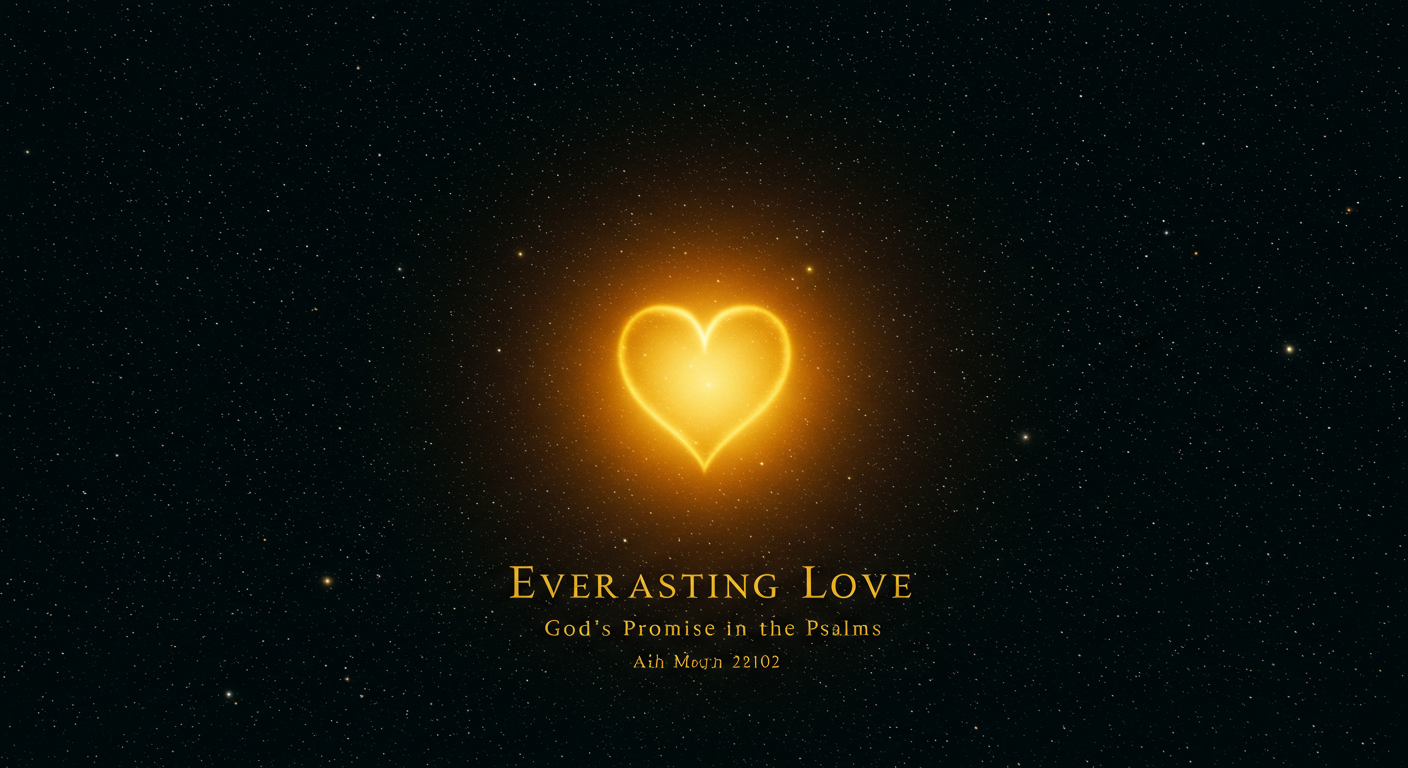Healing In The Psalms: God’s Promise Of Restoration
You may have found yourself turning to the Psalms in a season of pain, confusion, or loss. That instinct is ancient and wise — the Psalms give you language for every human experience, including your deepest needs for healing and restoration. In this article, you’ll explore what the Psalms say about healing, how the specific promises work in your life, and practical ways you can lean into those promises while also caring for your whole person. Along the way, you’ll see key verses such as Psalm 30:2 and Psalm 147:3 and how they apply today.
Why the Psalms matter when you’re seeking healing
The Psalms are poetry, prayer, and worship rolled into one. They reflect human vulnerability — fear, grief, anger, hope — and they also point you back to God’s character: compassionate, sovereign, and present. When you’re looking for healing promises in Psalms, you’re not just looking for a checklist of cures. You’re entering a relationship language that shapes how you understand suffering and recovery. The Psalms teach you to bring raw feelings to God and to trust that restoration is part of His nature.
Healing promises in Psalms: not a cure-all, but a living hope
When people talk about healing promises in Psalms, there can be confusion: are these promises a guarantee of physical health? The Psalms don’t always promise immediate physical healing, but they do promise that God is near to the broken, attentive to cries for help, and able to restore. That restoration can be physical, emotional, relational, or spiritual. The Psalms offer you a lens to see healing as holistic, where God addresses the whole person rather than focusing strictly on symptoms.
Psalm 30:2 — A personal plea and God’s answer
Psalm 30 is often read as a song of thanksgiving for deliverance from crisis. The psalmist begins with a desperate cry and ends with public praise. Look at the petition and the response in Psalm 30:2: “Lord my God, I called to you for help, and you healed me.” That verse models for you how to pray: honestly and directly. You call out, and the psalmist testifies that God responded. The application for your life is to practice vulnerability — name what hurts, call to God, and expect that God hears and works, sometimes immediately, sometimes over time.
How Psalm 30:2 shapes your prayers for healing
You don’t have to pretend everything’s fine when you pray. Psalm 30:2 shows you a pattern: call out, remember God’s past faithfulness, and respond in thanksgiving. When you practice this pattern, you create an honest rhythm that helps you process pain and notice God’s movement. That movement may be inner peace, relationships restored, gradual physical improvement, or a new perspective that brings meaning. The psalmist’s story permits you to wait in hope — because the promise of restoration is tied to God’s character.
Psalm 147:3 — God heals the brokenhearted
One of the clearest statements about emotional healing is found in Psalm 147:3: “He heals the brokenhearted and binds up their wounds.” This promise is straightforward and tender. It assures you that God is not indifferent to emotional or psychological pain. He binds wounds — imagery that communicates careful attention and gentle care. When you’re wounded by loss, shame, rejection, or trauma, this verse invites you to let God tend your deepest hurts.
Practical application of Psalm 147:3 in your life
How does “He heals the brokenhearted” play out practically? It can look like seeking a safe community to share your story, finding a counselor who integrates faith and therapy, engaging in prayer and lament, and allowing seasons of rest and spiritual practices that rebuild inner resources. Psalm 147:3 permits you to expect tenderness from God and to pursue practical steps toward healing without thinking you’re abandoning faith.
Healing the body: verses that speak to physical restoration
The Psalms include several references that link God to physical healing. For example, Psalm 41:3 says, “The Lord sustains them on their sickbed and restores them from their bed of illness.” That image tells you that God cares for you in your weakness and can minister directly to physical suffering. Psalm 103:2-5 expands the theme, listing the benefits of God’s mercy, including healing and renewal. These passages together shape a theology of restoration where God’s mercy participates in the recovery of your body.
What emotional and spiritual restoration looks like in the Psalms
Restoration in the Psalms is not only about bodies. Think about Psalm 23:3: “He refreshes my soul. He guides me along the right paths for his name’s sake.” The image of a restored soul points you toward inner renewal — peace, direction, and purpose. Psalm 34:18 says, “The Lord is close to the brokenhearted and saves those who are crushed in spirit.” That nearness is a form of restoration: when your soul is mended, you regain capacity for hope and relationship.
Lament and honest speech: the Psalms teach you how to grieve
A surprising part of healing promises in the Psalms is that grief and complaint are allowed and even practiced. Many psalms are laments (e.g., Psalm 6:2-3), where the psalmist openly voices fears and asks for deliverance. Lament helps you process what’s happening and prevents unresolved grief from hardening into bitterness. When you faithfully lament, you invite God into your pain and open space for restoration to take root.
How to use the Psalms when you feel stuck
If you’re stuck emotionally or spiritually, the Psalms give you specific prayers and words to use. Start by reading a psalm aloud, then personalize it. For example, you can pray the words of Psalm 30:2 with your own situation: “Lord my God, I called to you for help about [your condition], and I claim your promise to heal.” Or let Psalm 147:3 shape your silence: invite God to bind the wounds you can’t yet touch. Repeating and praying familiar words can steady your heart and open you to transformation.
Using scripture-based prayers for daily restoration
Prayers rooted in the Psalms can become regular rhythms that renew you. Choose a psalm for the morning to set your posture toward hope, and one for the evening to process the day’s hurts. For example, morning meditation on Psalm 23:3 can center you on God’s guidance; an evening reflection on Psalm 147:3 can bring gentle healing for the day’s bruises. These small practices build resilience and invite God’s restorative presence into the ordinary details of your life.

Healing promises in Psalms and community care
The Psalms were sung in a community context; healing often happens in community, too. When you bring your pain to a trusted group, you allow others to embody the promises you read. For example, Psalm 133:1 celebrates unity — healing that occurs when people dwell together in harmony. Community offers prayer, practical aid, emotional support, and honest reflections that can accelerate restoration.
Balance: faith, prayer, and practical care
A common misunderstanding is that relying on healing promises in Psalms means rejecting medical care. The Psalms never force you into false binaries. You can (and often should) pursue medical help, therapy, rest, and nutrition while you pray the psalms. God often uses doctors, counselors, and medicine as instruments of healing. When you pair spiritual practices with practical care, you honor the fullness of God’s provision for restoration.
Discernment: when to press for a miraculous healing and when to accept slow restoration
The Psalms give you hope without promising a timeline. Miracles occur, but God also works through slow processes. Use discernment: continue to pray expectantly with trust in the healing promises in Psalms, while also recognizing that sometimes healing is gradual or takes unexpected forms. You can learn to hold both hope and patience, asking God for clarity and wisdom about the best paths forward for your particular situation.
The Psalms and resilience: learning to persevere
The language of the Psalms builds resilience by training you to return to God repeatedly. Verses like Psalm 42:11 — “Why, my soul, are you downcast? Why so disturbed within me? Put your hope in God” — shows you a spiritual discipline: you bring your despair to God and you choose hope. That discipline doesn’t erase pain, but it protects you from despair and enables you to take healing actions with steady courage.
When restoration is relational: reconciliation in the Psalms
Restoration also often means reconciliation. The Psalms contain petitions for forgiveness and a restored relationship with God and others. Psalm 51 is a classic example of confession and renewed intimacy with God, modeling how contrition and repentance can lead to restored life. When your wounds involve broken relationships, the Psalms guide you toward confession, repentance, and the hope of reconciliation as part of comprehensive healing.
Hope amid chronic illness and long seasons
If you live with a chronic illness, the healing promises in Psalms remain relevant and compassionate. The Psalms acknowledge ongoing weakness (e.g., Psalm 6:2) while testifying to God’s sustaining presence. You can read the Psalms to find words that honor the persistence of your condition and also point to an eternal hope that transcends temporary suffering. That dual focus helps you live meaningfully in the present while holding on to God’s restorative purposes.
Worship as a pathway to healing
Worship changes the atmosphere of a hurting heart. The Psalms are worshipful poems that invite you into praise even in hardship. Singing or reflecting on psalms like Psalm 30 or Psalm 103 can shift your perspective from isolation to communion with God. Worship doesn’t always remove pain, but it recalibrates your heart to recognize God’s presence, which is itself restorative.
Artistic and creative practices using the Psalms
You can engage the healing promises in Psalms through creative expression — journaling, painting, music, or poetry. Try rewriting a psalm in your own words about your specific wound or turning a verse like Psalm 147:3 into a short prayer or lyric. Creative acts give you new ways to process pain, name hope, and release burdens. The Psalms were originally musical; letting your creative voice echo them can be a powerful method of receiving restoration.
Common objections: What if God doesn’t heal like I want?
You may ask: What if you’ve prayed the words of the Psalms and nothing seems to change? The Psalms don’t promise instant resolution every time, but they do promise God’s faithfulness to be with you. Even when physical healing doesn’t happen how you expect, the Psalms model a deep trust in God’s character — that He is good, near to the broken, and able to redeem suffering. You can grieve honestly and still hold on to the foundational assurance that God will work restoration in some form.
Biblical examples of restoration to learn from
Across the Bible, restoration takes many forms. David’s own life reflects cycles of defeat and restoration that echo the psalmist’s trust. When you read Psalm 30, you see someone who experienced near collapse and then public rejoicing. These patterns teach you that God’s restoration often has a narrative arc: pain, petition, waiting, and eventual praise. That arc gives you a framework to interpret your own story and to expect God’s redeeming work even when the timeline is unclear.
Incorporating the Psalms into pastoral and therapeutic care
If you’re leading someone through suffering, the Psalms are a helpful resource. Pastors, counselors, and friends can suggest specific psalms to read or pray together, such as Psalm 23 for guidance, Psalm 42 for lament, or Psalm 147:3 for emotional healing. Using scripture in care contexts needs sensitivity — let the person lead, offer the Psalms as companions rather than prescriptions, and combine spiritual resources with professional help when necessary.
Practical steps to meditate on healing promises in Psalms
You can build a simple routine around the Psalms to invite healing into daily life:
- Choose one or two psalms to focus on for a week (for example, Psalm 30 and Psalm 147:3).
- Read slowly, aloud, and reflect on one line that resonates.
- Journal your responses, prayers, and any small signs of change you notice.
- Share a verse with a trusted friend and invite them to pray with you.
These steps are practical and repeatable. They create patterns of attention that let healing promises in Psalms move from abstract ideas to lived experience.
When healing involves forgiveness: an inner restoration
Sometimes healing requires forgiveness — of yourself or others. Psalms like Psalm 32:1-2 highlight the relief that comes with confession and pardon. Forgiveness is a restorative act that frees you from the corrosive effects of bitterness and shame. You don’t have to wait to feel ready; you can prayerfully step into forgiving, asking God to help you through the process.
The long view: hope beyond immediate healing
The Psalms point you toward an ultimate restoration that transcends present pain. They frequently look forward to God’s reign when injustice, sickness, and sorrow will be undone. That telos (ultimate hope) sustains you when immediate healing is elusive. Verses like Psalm 146:8-9 remind you that God brings justice and healing in the long run, giving you a spiritual horizon that keeps present sufferings in perspective.
Integrating community liturgy with personal healing practices
Public worship often lifts individual burdens because corporate prayers and psalms amplify hope. When you hear the congregation sing or pray a psalm like Psalm 30, you benefit from shared remembrance of God’s past faithfulness. Participating in communal rhythms — weekly services, prayer groups, or small-group readings of the Psalms — can compound the healing effects you experience privately.
A caution: using the Psalms ethically in ministry
If you’re helping others, don’t weaponize the healing promises in Psalms with promises you can’t keep. Avoid claiming that reciting a verse will guarantee a certain outcome. Instead, use the Psalms to cultivate hope, honesty, and trust. Provide practical care and refer to professionals when issues are beyond your skill set. Ethical ministry balances spiritual encouragement with responsibility.
A closing reflection: bringing the Psalms into everyday life
You don’t have to be a scholar to receive the Psalms’ healing. Start small. Keep a psalm by your bedside, whisper a line during a walk, or text a verse to a friend who’s hurting. Let Psalm 30:2 and Psalm 147:3 be anchors: call to God when you’re hurting, and trust that He binds wounds. Over time, those practices shape you into a person who carries healing into relationships and community.
Final practical prayers and actions you can try tonight
You can finish today with a short, simple practice:
- Read Psalm 147:3 slowly.
- Name one wound — emotional, physical, or relational — then say, “Lord, I bring this to you.”
- Pause and invite the presence of God to bind that wound.
- Close by reciting Psalm 30:2 as your personal petition and affirmation of hope.
These tiny rituals, repeated, allow healing promises in Psalms to move from words on a page into the fabric of your daily life.
You’ve now explored many facets of the healing promises in Psalms: their theology, practical uses, and how to integrate them with real-world care. The Psalms give you words to hold, songs to sing, and prayers to pray. They invite you to bring honest pain before a God who binds wounds and restores souls.
Explore More
For further reading and encouragement, check out these posts:
👉 7 Bible Verses About Faith in Hard Times
👉 Job’s Faith: What We Can Learn From His Trials
👉 How To Trust God When Everything Falls Apart
👉 Why God Allows Suffering – A Biblical Perspective
👉 Faith Over Fear: How To Stand Strong In Uncertain Seasons
👉 How To Encourage Someone Struggling With Their Faith
👉 5 Prayers for Strength When You’re Feeling Weak

📘 Jesus and the Woman Caught in Adultery – Grace and Mercy Over Judgement
A powerful retelling of John 8:1-11. This book brings to life the depth of forgiveness, mercy, and God’s unwavering love.
👉 Check it now on Amazon
🌍 “Every great message deserves a home online.”
Don’t let your calling stay hidden. Start a Christian Blog/Website using Hostinger — with 99.9% uptime, free domain, and SSL, your voice can shine for God’s glory anytime, anywhere.
👉 Begin today. Try it RISK-FREE!
“Your body is God’s temple — care for it with purpose.”
Renew your energy and restore balance the natural way. Mitolyn helps support a healthy metabolism, giving you the vitality to live out God’s calling with strength and confidence.
🌿 Unlock Your Metabolic Power. Burn More Calories & Feel Great With Mitolyn.
👉 Start Today. Check Price Now.
As a ClickBank & Amazon Affiliate, I earn from qualifying purchases.
Acknowledgment: All Bible verses referenced in this article were accessed via Bible Gateway (or Bible Hub).
“Want to explore more? Check out our latest post on Why Jesus? and discover the life-changing truth of the Gospel!”








